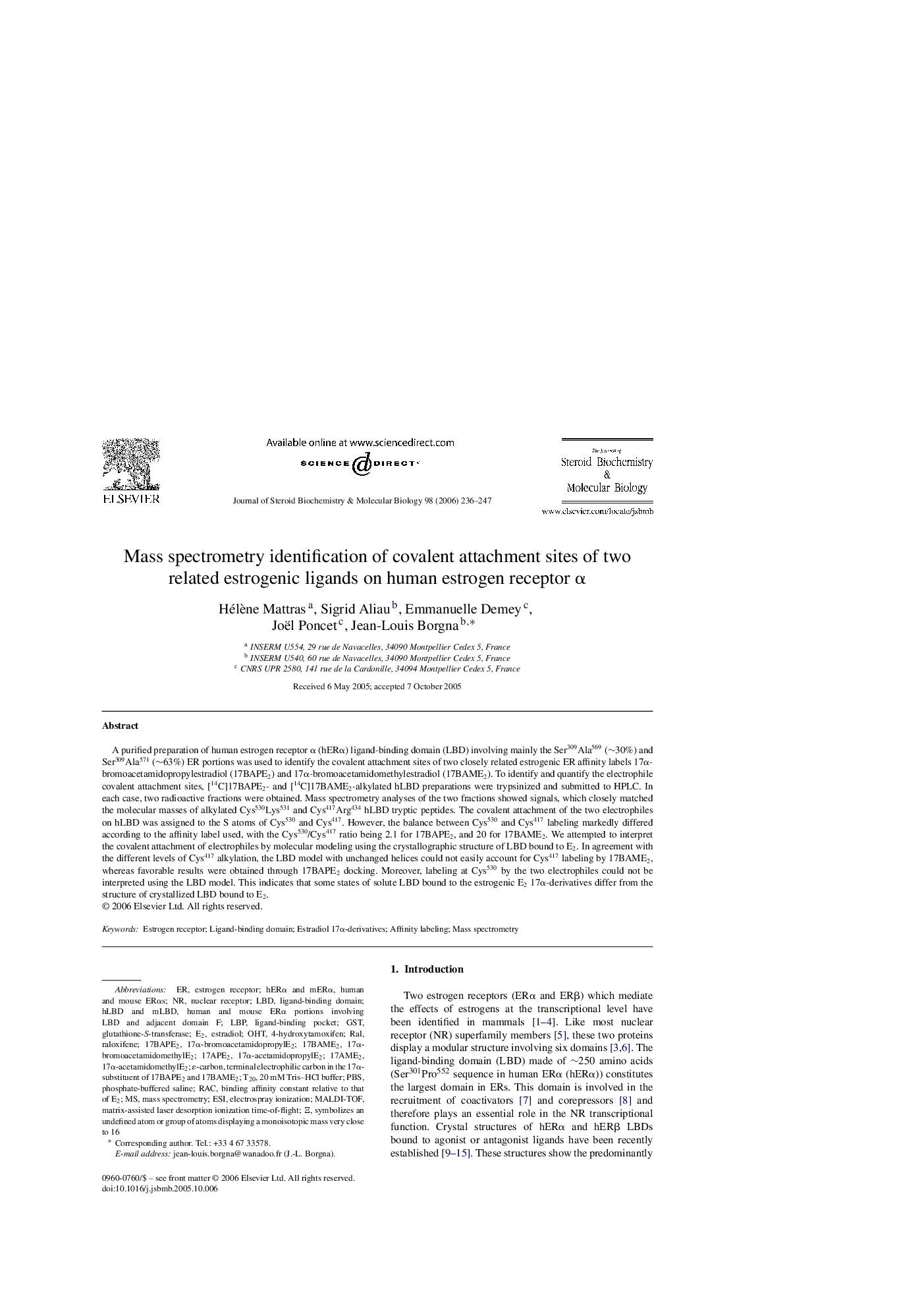| Article ID | Journal | Published Year | Pages | File Type |
|---|---|---|---|---|
| 1992681 | The Journal of Steroid Biochemistry and Molecular Biology | 2006 | 12 Pages |
Abstract
A purified preparation of human estrogen receptor α (hERα) ligand-binding domain (LBD) involving mainly the Ser309Ala569 (â¼30%) and Ser309Ala571 (â¼63%) ER portions was used to identify the covalent attachment sites of two closely related estrogenic ER affinity labels 17α-bromoacetamidopropylestradiol (17BAPE2) and 17α-bromoacetamidomethylestradiol (17BAME2). To identify and quantify the electrophile covalent attachment sites, [14C]17BAPE2- and [14C]17BAME2-alkylated hLBD preparations were trypsinized and submitted to HPLC. In each case, two radioactive fractions were obtained. Mass spectrometry analyses of the two fractions showed signals, which closely matched the molecular masses of alkylated Cys530Lys531 and Cys417Arg434 hLBD tryptic peptides. The covalent attachment of the two electrophiles on hLBD was assigned to the S atoms of Cys530 and Cys417. However, the balance between Cys530 and Cys417 labeling markedly differed according to the affinity label used, with the Cys530/Cys417 ratio being 2.1 for 17BAPE2, and 20 for 17BAME2. We attempted to interpret the covalent attachment of electrophiles by molecular modeling using the crystallographic structure of LBD bound to E2. In agreement with the different levels of Cys417 alkylation, the LBD model with unchanged helices could not easily account for Cys417 labeling by 17BAME2, whereas favorable results were obtained through 17BAPE2 docking. Moreover, labeling at Cys530 by the two electrophiles could not be interpreted using the LBD model. This indicates that some states of solute LBD bound to the estrogenic E2 17α-derivatives differ from the structure of crystallized LBD bound to E2.
Keywords
T20PBSESIRAC4-hydroxytamoxifenMALDI-TOFLBDGSTLBPEstradiolligand-binding pocketOHTligand-binding domainRALRaloxifenematrix-assisted laser desorption ionization time-of-flightMass spectrometryPhosphate-buffered salineAffinity labelingglutathione-S-transferaseEstrogen receptorNuclear receptorelectrospray ionization
Related Topics
Life Sciences
Biochemistry, Genetics and Molecular Biology
Biochemistry
Authors
Hélène Mattras, Sigrid Aliau, Emmanuelle Demey, Joël Poncet, Jean-Louis Borgna,
